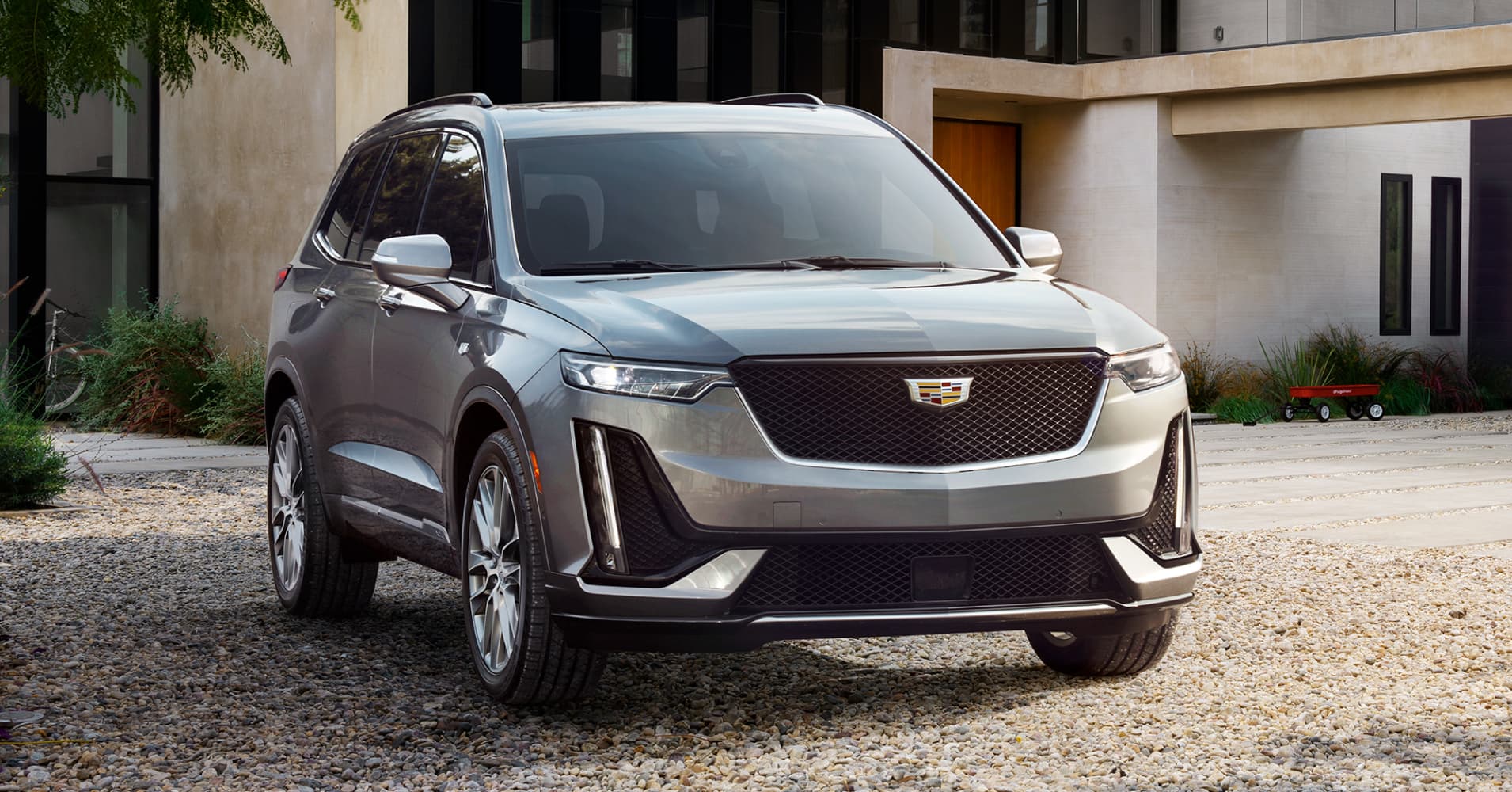
General Motors' luxury brand Cadillac is rolling out a new vehicle every six months, including what the automaker is billing as a major new product set to debut at the New York International Auto Show next month.
While brand boss Steve Carlisle won't say what's coming to the Big Apple, Caddy is in the midst of shifting its emphasis from traditional sedans and coupes to a rapidly expanding lineup of crossover utility vehicles like the big XT6 model that debuted at the North American International Auto Show in Detroit in January.
Sales of utility vehicles of all kinds that are dominating the American are critical to the automaker's long-promised "renaissance," Carlisle said in an interview. Utility vehicles — pickups, SUVs and crossover utility vehicles — currently make up about 70 percent of all vehicle sales in the U.S. and crossovers account for about 40 percent of the market. Crossovers offer the convenience and hauling capability of an SUV with the smoother drive of a car.
Over the long term, Cadillac hopes to ride another emerging wave: the shift from the internal combustion engine to battery-electric propulsion.
The first of its all-electric models, a long-range crossover utility vehicle, was revealed in concept form at the Detroit Auto Show and will start production "2022-ish," Carlisle told CNBC.
Beyond that point, he said, "it's not unlike what we're doing with [gas-powered products] now with a new [all-electric] model coming every six months."
Initially, Caddy's all-electric lineup will "overlap" its gas-powered product line. He said battery-electric vehicles, or BEVs, will begin to replace conventional models "in the middle of the 2020s and accelerate from that."
Cadillac is by no means the only luxury automaker pushing electrification. There's Tesla, of course, which unveiled its own electric compact crossover last week. Jaguar recently launched its own electric crossover, the I-Pace, and Audi is preparing to introduce one of its own with two more BEVs due over the next couple years. Even Porsche has laid out plans for three electric models by 2022, with virtually every other high-line brand entering the space.
The Canadian-born Carlisle acknowledged it will be a highly competitive electric car market with no clear indication of how consumers will respond. All so-called electrified vehicles — including hybrids, plug-ins and BEVs — accounted for less than 5 percent of the U.S. auto market, combined, in 2018.
AlixPartners, a Detroit-based consulting firm, has warned that there could be a "pile-up of epic proportions" coming as this tidal wave of new electric vehicles arrives.
But there really is no choice, Carlisle said, especially if Caddy wants to continue growing its presence around the world.
The brand hasn't fared particularly well in its home market in recent years. U.S. sales hit a post-recession peak of 182,543 in 2013 and slipped to just 154,702 vehicles sold last year. The numbers are a bit misleading, as Caddy has been consciously trimming back on lower-profit fleet sales. On the retail side, demand was actually in positive territory, while it was down 2.6 percent for the overall U.S. luxury car market.
The new XT6 won't reach the market until later this year, but a previous addition, the XT4 crossover, has found a strong market, the compact model now No. 1 in its segment, dislodging Acura's well-reviewed RDX. The new crossovers, according to Carlisle, are forecast to help the brand achieve a "double-digit increase" in its overall U.S. sales this year.
Caddy is also working on updates to its other two crossovers — the midsize XT5 and the massive Escalade — both due to debut over the next 12 months.
While the Cadillac utility vehicle lineup has grown fast, it is dropping sedan and coupe models such as the compact ATS and full-size CT6. That said, the GM luxury division remains "very much committed to sedans, to clear the air on that," said Carlisle. Two new four-door models, the compact CT4 and the bigger CT5, are in the works.
Meanwhile, the phase-out of the CT6, originally envisioned as the Caddy "flagship," has been pushed back. The Detroit plant building it is one of three GM assembly facilities that were scheduled to close this year, but it will remain open until "at least" January 2020, said Carlisle, adding "we continue to look at alternatives" that could keep the sedan in production beyond that.
The CT6 has proven to be a reasonably strong contender in what has become Cadillac's biggest national market, China. Sales there – along with demand in a dozen other regional markets – helped the brand report its overall best numbers since 1978, at 382,184 vehicles.
China is one of the key reasons why Cadillac is pushing so aggressively into electrification. The government's new energy vehicle rules have already led to it becoming the world's largest market for plug-based vehicles, and the shift will continue, said Carlisle. And while the Trump administration may be ready to ease back on emissions and mileage standards here, Europe and other key markets are tightening up their own mandates, he noted.
"When we get into an electrified world, it opens up new opportunities" for Cadillac to compete in places where it currently has little or no presence, the brand chief said.
Another part of the Caddy comeback strategy is to emphasize self-driving vehicle technology. Its Super Cruise system, which allows extended, hands-free operation on limited-access highways, has been widely praised. It is currently available only on the CT6, but with the "take rate" jumping to about 50 percent of those sedan buyers in recent months, the automaker is looking to expand it to the rest of its lineup over the next several years.
With new products and new technology, Caddy officials say they're confident they've finally got some positive momentum going. Perhaps. But the division that long touted itself as "the standard of the world" is going to have to work hard to live up to that mantra.
via IFTTT
No comments:
Post a Comment